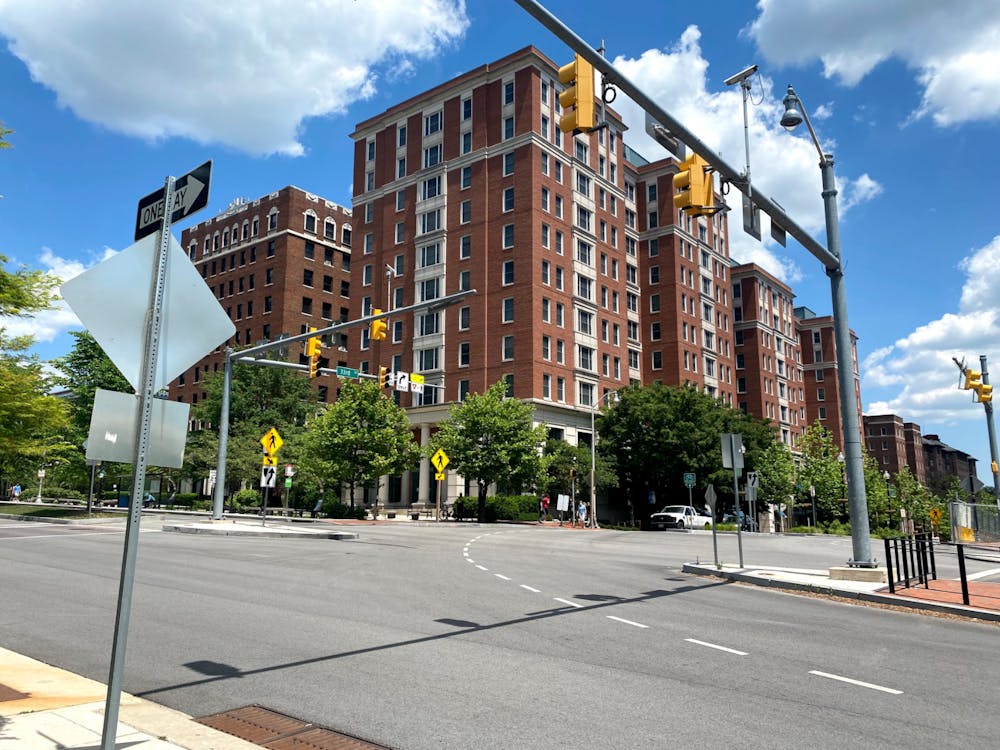One year after pausing efforts to create the Johns Hopkins Police Department (JHPD), the University announced the nine winners of its $6 million Innovation Fund for Community Safety. According to the University, the purpose of the fund is to bolster community initiatives aimed at reducing violent crime. These programs will take place near University campuses in Mount Vernon, Charles Village and East Baltimore.
Despite these investments in non-policing alternatives to public safety, Vice President for Communications Andrew Green wrote in an email to The News-Letter that the University plans to move forward with the creation of the JHPD.
In an interview with The News-Letter, Alicia Wilson, vice president for economic development for the University and its health system, explained that the goal of the initiative was to involve the community in tackling safety issues on and near campus and to deliver community-focused solutions.
The grantees are Abuse Intervention Services, House of Ruth Maryland; Baltimore Legacy Builders Collective, Job Opportunities Task Force; Block Captain Boot Camp, No Boundaries Coalition; Existential Determinants of Health, WombWork Productions; Good Harvest Occupational Skills Training Program, St. Vincent de Paul of Baltimore; McElderry Multiracial Organizing Project, CASA; Mildred A. Allen Arabber Equestrian and Heritage Center, Baltimore Heritage; Safety at the Margins, Charm City Care Connection and Safe Communities; and Stable Homes — Safe Communities, Pro Bono Resource Center of Maryland.
Each awardee will receive up to $250,000 annually for three years to support their project, with the possibility of an additional year of funding based on the program’s progress and availability of leftover funds.
Applications were reviewed by a Selection Advisory Committee of six community residents and six Hopkins affiliates. According to Joshua Sharfstein, vice dean for public health practice and community engagement at the Bloomberg School of Public Health, submissions were evaluated based on their potential impact, structure and financial feasibility, among other criteria.
In an interview with The News-Letter, Associate Professor at the School of Public Health and member of the selection committee Vanya Jones highlighted the varied backgrounds of members of the Committee.
“What’s really nice about the committee is it represents the Baltimore area,” Jones said. “We had young people, people who work in violence prevention, community members, healthcare providers who serve communities, so there’s a huge breadth of people who represent Baltimore.”
Rising sophomore Xiomara McDonald appreciates that the University was willing to work with local organizations.
“Even Hopkins-led efforts that mean well sometimes still cause harm,” McDonald said. “The great thing about this fund is that the organizations are all pre-existing within the Baltimore community, with a range of mission statements from prevention to intervention, youth to adults.”
McDonald noted that she hopes the University will find ways to support these programs beyond the monetary assistance of the fund.
Burgundi Allison, another member of the selection committee and program associate at the Annie E. Casey Foundation, emphasized the urgency with which the committee approached discussions in an interview with The News-Letter.
“We’re not just talking about some high level issues; we’re actually talking about blood in the streets, and there is no time to be wasted when we want to have an impact there,” Allison said.
These programs will provide a wide range of services, such as counseling, job training, mentorship and community organizing. According to an email from University President Ronald J. Daniels and Dean of the Bloomberg School of Public Health Ellen J. Mackenzie, around 30 local nonprofit partners will be involved, serving almost 16,000 Baltimore residents.
In an email to The News-Letter, The Coalition Against Policing by Hopkins (CAPH) expressed concern that the University’s Innovation Fund will be used to distract from their plans to create the Johns Hopkins Police Department (JHPD).
“We hope that the University will not attempt to use their initiative as cover for their plans for an armed police force,” the group wrote. “We know that $6 million pales in comparison to the amount of money that will be spent on an armed police force, not to mention the half a million dollars spent on lobbying in Annapolis to get their [police] bill passed in the [Maryland General Assembly].”
CAPH emphasized that the group will only be satisfied if the University abandons its plans for an armed police force and instead invests directly into the local community.
Green explained the University’s rationale against dismissing plans for the JHPD, citing a desire to ensure the safety of those on campus and reduce its dependency on the Baltimore Police Department. He also pointed to legislative changes that have occurred since the University delayed its plans for the JHPD.
“As we had hoped, during the pause in implementation of the JHPD, the Maryland General Assembly enacted important reforms to the Law Enforcement Officers Bill of Rights and other policing statutes, and Hopkins has been exploring and investing in non-police approaches to public safety as well,” he wrote.





